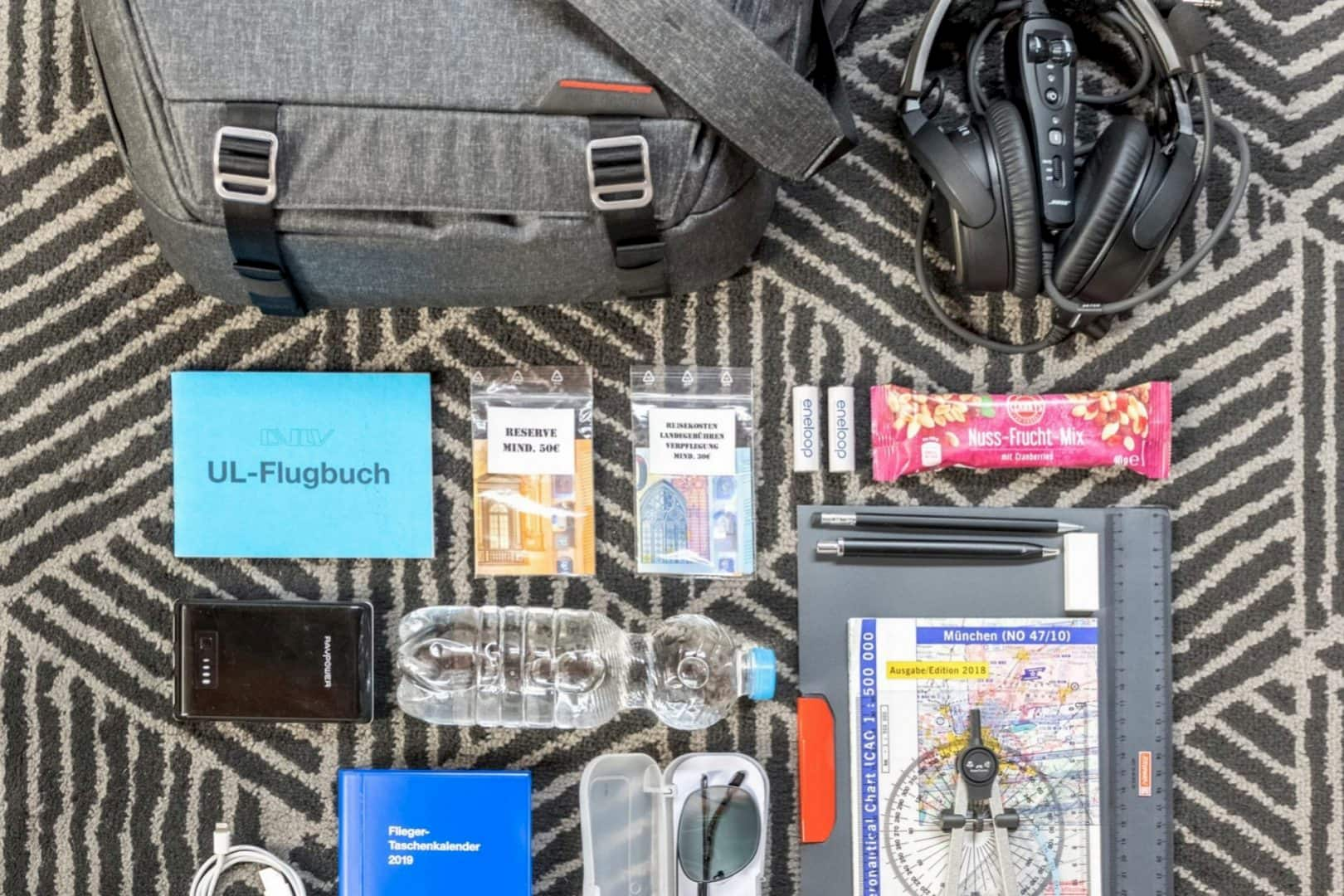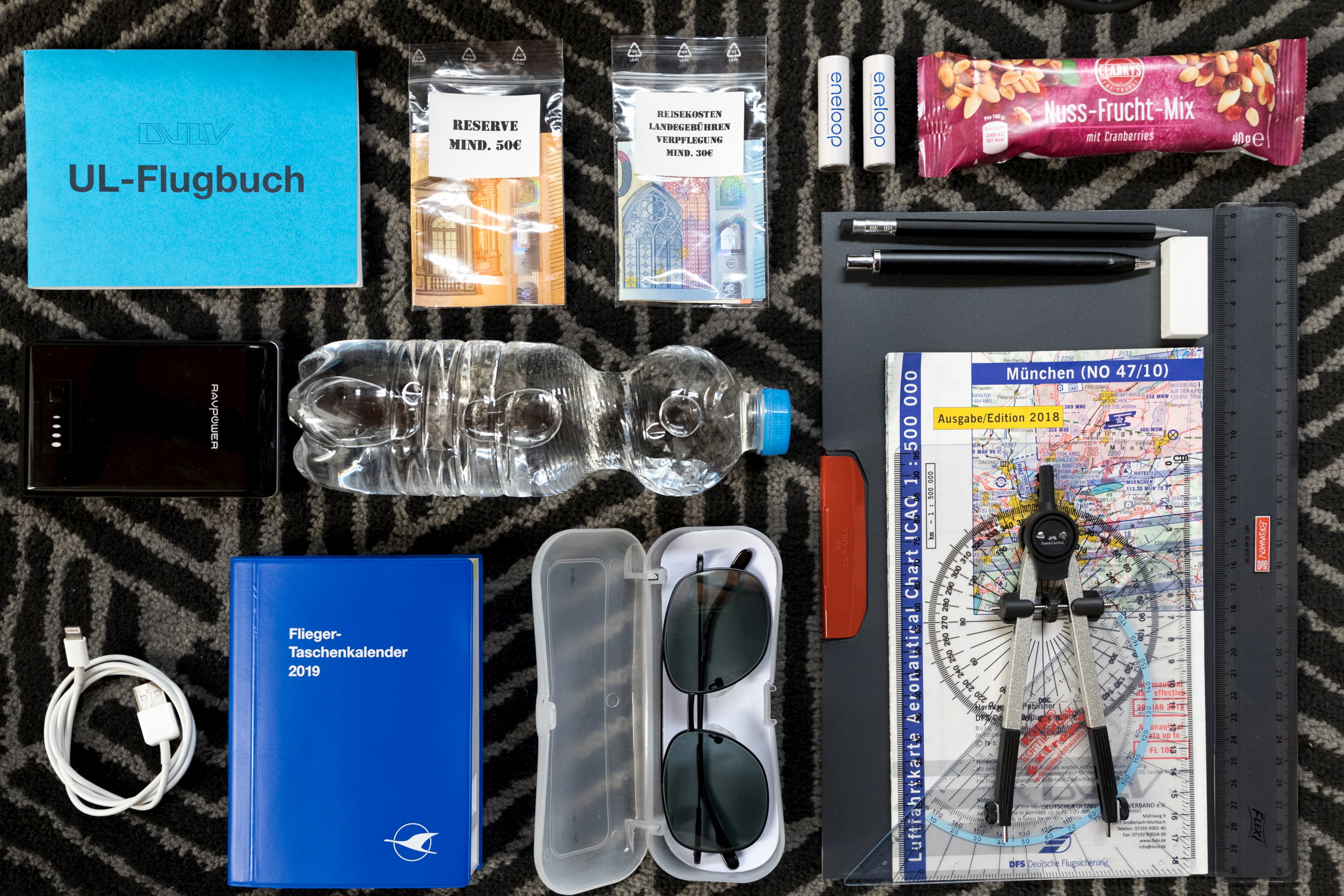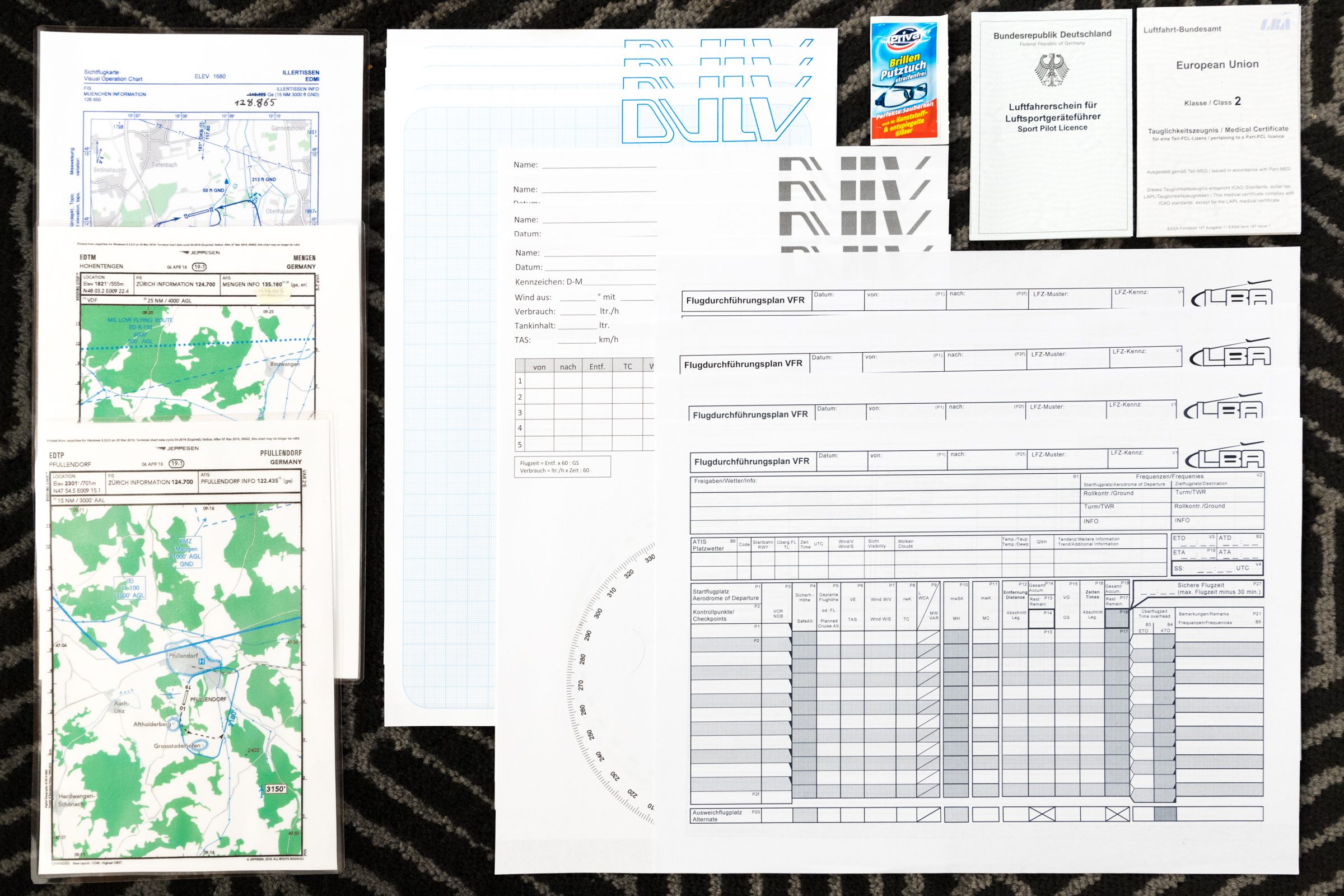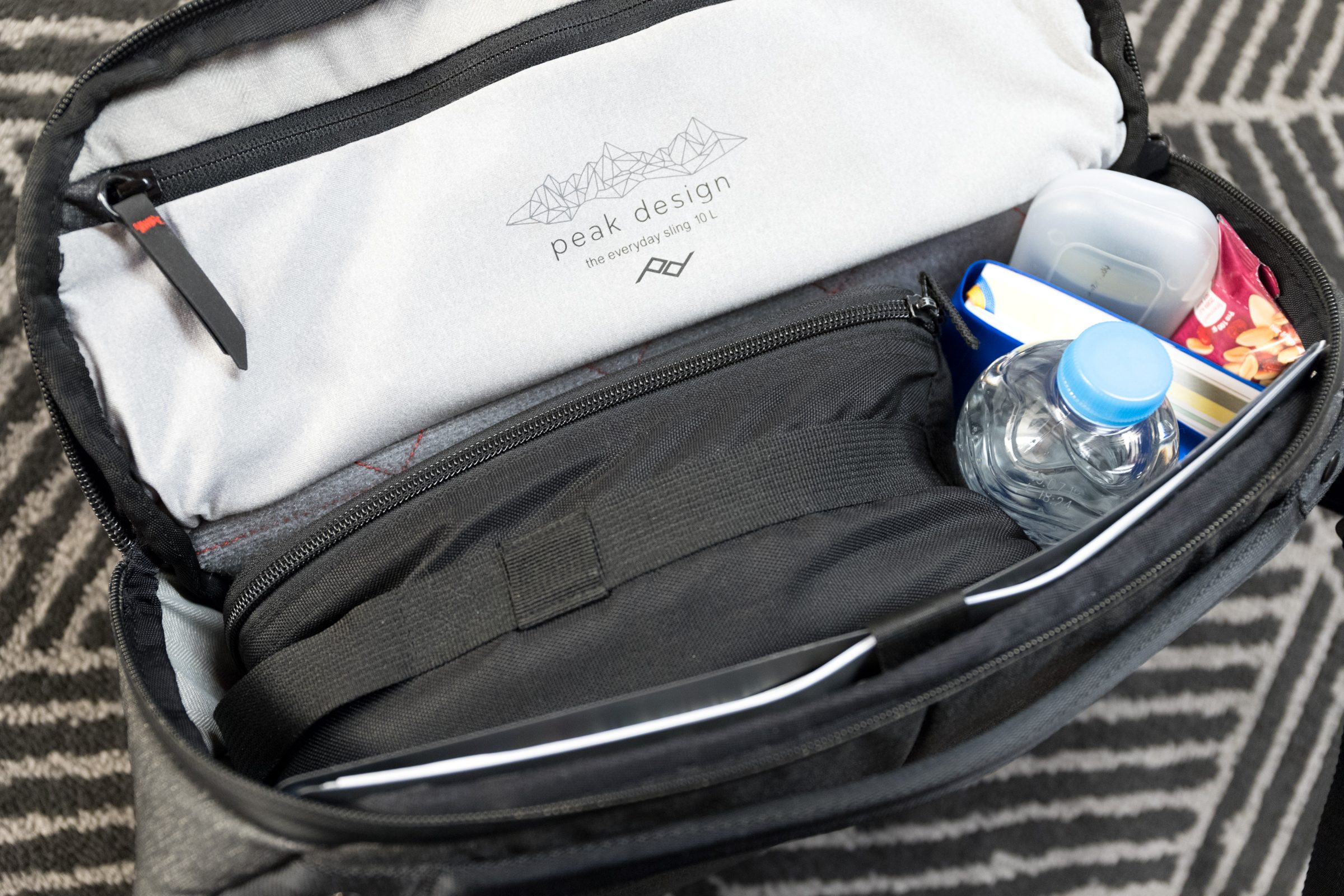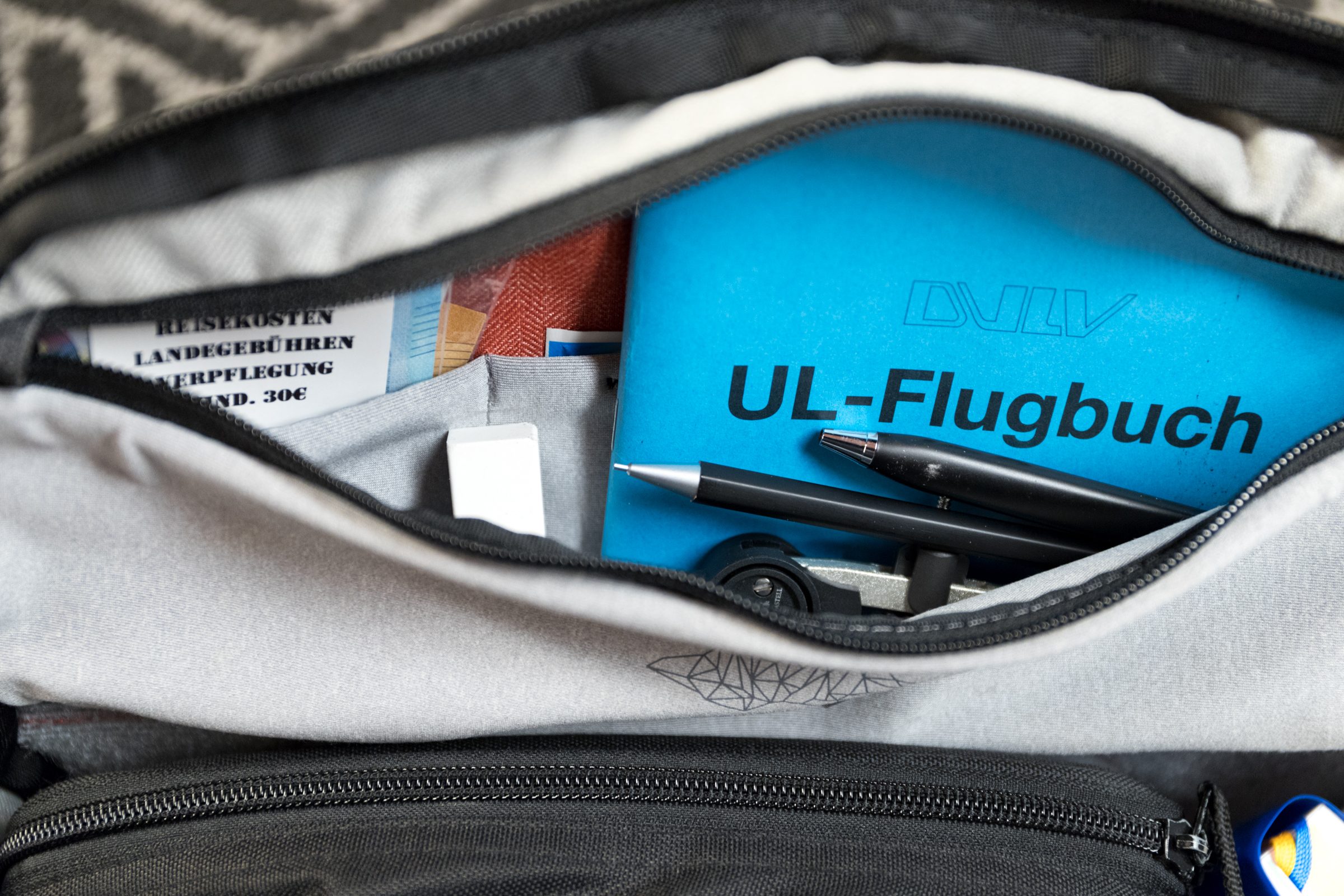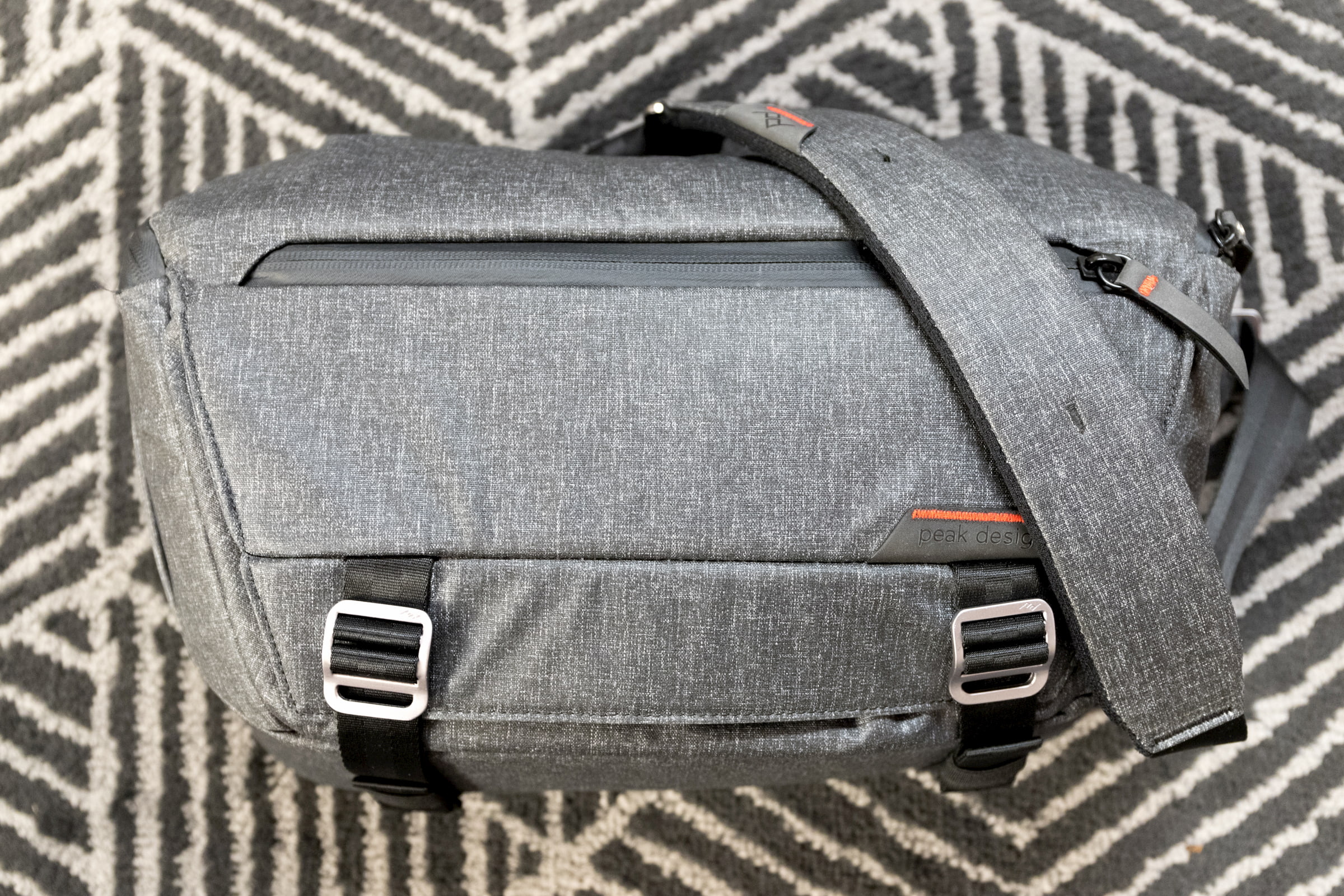Over time, you learn which objects are useful and which are superfluous when flying. I would like to live more minimalism here but as a pilot you try to prepare for unforeseen things.
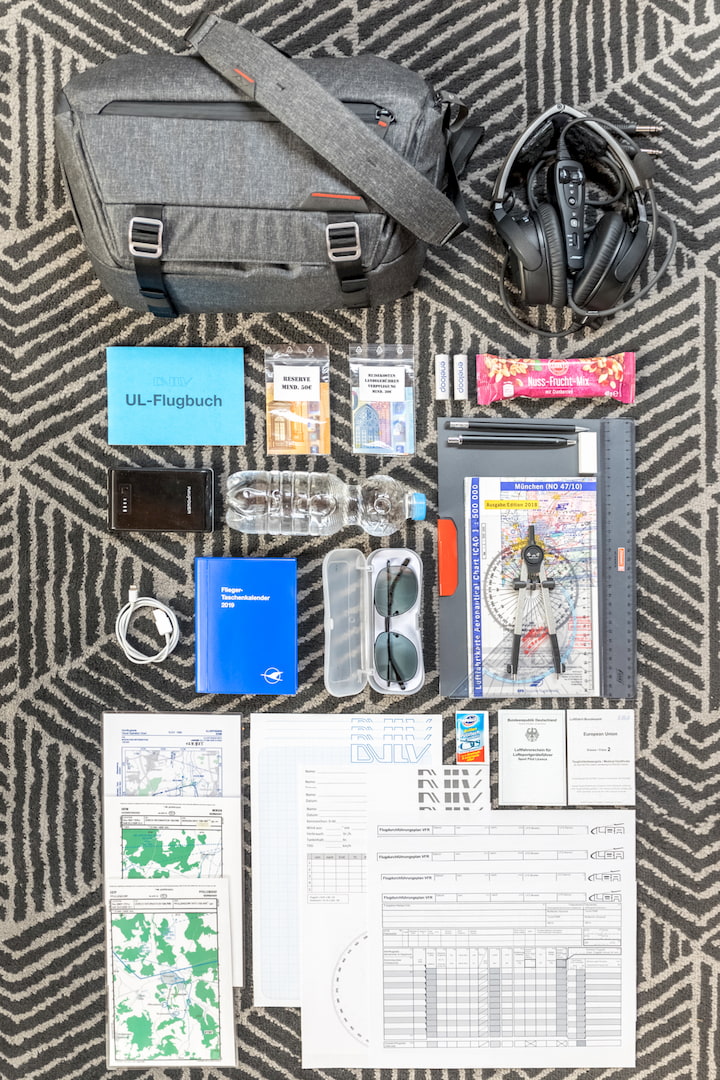
I pack my bag for each flight anew with the help of a small checklist, which I have put together over time so that I don’t forget anything and this proves to be very useful again and again. So I packed the bag very fast and can leave the house with a clear conscience and go to the airfield.
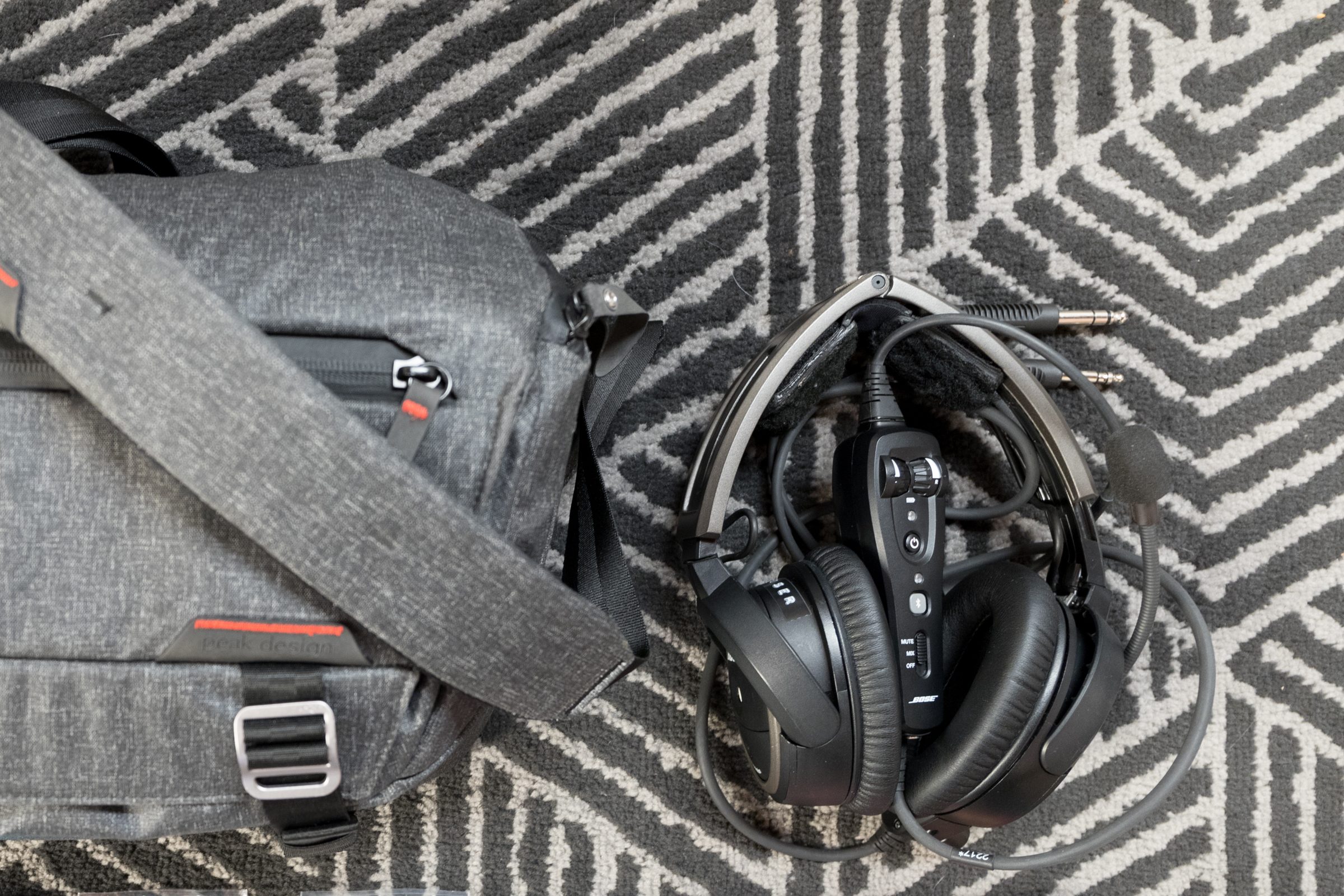
First to the headset. The Bose A20 or the Lightspeed Zulu 2 is essential for me. Once you get used to noise-canceling headphones, you won’t want to use any other headsets. I wrote about them here.
logbook
The flight log is a document for the pilot in which all flights in which I was active either as a student or as a pilot are registered. It is practically my complete aviation curriculum vitae written down here. After each flight the airfields, routes, times and landings are noted here.
cash
Cash is still a thing in aviation as I have got to know it so far. Only a few of the small airports accept card payments. That’s why I made it a habit to take money with me for expected expenses and emergencies.
Expenses for landing fees are expected to be between 4 and 8€, depending on the airfield. I also want to cover the food if you want to eat or drink something at a strange place.
For emergencies I would always like to have at least 50€ as security. This money should ensure that I can refuel a few litres of fuel or that I can take a taxi to the nearest train station.
batteries
The batteries are replacement batteries for my headset or the passenger’s headset. It can always happen that you forgot to charge the batteries in the headset and the Eneloop batteries have such a low self-discharge that I can carry them without hesitation for a longer time without intermediate charging.
snack
Student food as a small snack in between is an ideal companion. The stuff lasts a long time and is always ready to hand if you forget your hunger on a long flight day at home and then your stomach suddenly reports.
Powerbank and charging cable
When flying the smartphone is not to be imagined away. It is extremely important that weather reports, NOTAMs or current news from the airfields’ websites are as up-to-date as possible. I also use the device as an emergency navigation system with offline maps. All the more important that even on a long day the operation of the smartphone is absolutely guaranteed.
Water
Stay hydrated! Especially on warm days the cockpit heats up quite a bit during flight and you open the air supply to regulate the temperature. You sit practically in a light draught with generally quite dry air. The water bottle is always full and ready to hand when I get into the machine. Tap water is available at almost every airfield.
navigation equipment
My flight planning does not stop with the fact that I finish everything the day before or early in the morning before the flight. If there are any postponements or I fly another route at short notice, I want to be able to reschedule. Therefore I always take the complete navigation set, consisting of: Ballpoint pen, mechanical pencil, eraser, compass, ruler, geo triangle, compass rose as well as the ICAO 1:500´000 map. This is the only way I can react flexibly to changes.
flyer pocket calendar
The airplane pocket calendar contains airfield data, approach charts, information on VFR air traffic, important addresses, air traffic regulations, information on flight safety, etc. In short: a permanent companion and reference book.
(Sun) Glasses
If you wear glasses like me, you have to bring a second pair of glasses with you. Mainly, however, the sunglasses in visual strength is (for me) the only possibility to fly over longer time with direct sunlight. I have less of a problem on the ground than in the air. The plane is glazed on four sides and you get a lot of sunlight during the day. From the ground you can see airplanes in the sky. In the air there are other airplanes but usually in the range of vision between the airplane and the land on the ground. Here one is glad about every possibility to be able to spot the small machines opposite fields and forests. Sunglasses are essential.
approach charts
The VFR approach charts are available for every accessible airfield and must be available in the most up-to-date version possible for all airfields that you want to fly to during the respective cross-country flight. Here you will find the course of the airport laps, the radio frequency(s), special features which are present during the approach or on the ground, noise-sensitive areas which should not be flown over and a map of the taxiways at the airport to find the way to the parking areas or to the tower after landing.
The approach charts from home and destination airports as well as from Alternate must be in the cockpit during the flight.
memos
Not much used up to now but if you need paper airplanes you can build them if you can’t get into the air because the weather is bad.
navigation sheet
In addition to the completed navigation sheet, I also take replacement template sheets with me to be able to make a new calculation at any time on the road.
flight execution plan
In the flight plan, prominent points on the route shall be recorded in chronological order prior to the flight and given route times. This means that it is always possible to check during the flight whether the planned times correspond to reality. Problematic are situations where you have calculated a flight time of 1 hour and then find out in flight that due to other wind after half an hour flight time only 30% of the distance was covered. Depending on how you did your fuel calculation you will not reach your destination. The flight execution plan is therefore also an instrument for self-checking in flight.
As with the navigation sheets, I take four spare sheets with me.
glasses cleaning cloth
Haze on the glasses annoy me and in the flight I do not want to let the beautiful view blocked. The eyeglass cleaning cloth is also great for wiping oily fingers or cleaning surfaces in the cockpit.
Licence and Medical
Nothing works without these documents. Checks at airports are rare, but in the situation that I am without papers on the way I do not want to go under any circumstances.
Depending on the age of the pilot, the medical is valid for different periods of time and must of course not have expired in order to be fit to fly.
“Pilot Bag”
Once again my Peak Design Everyday Sling 10L bag has proven to be useful. All my objects find space and I can store them in the airplane. Many of the “pilot bags” I have seen are super large and too thick. I also use the Peak Design Everyday Sling as a photo bag, for filming and when I’m out and about my notebook also fits inside. The bag has turned out to be a real “daily driver” for me in the last years.
